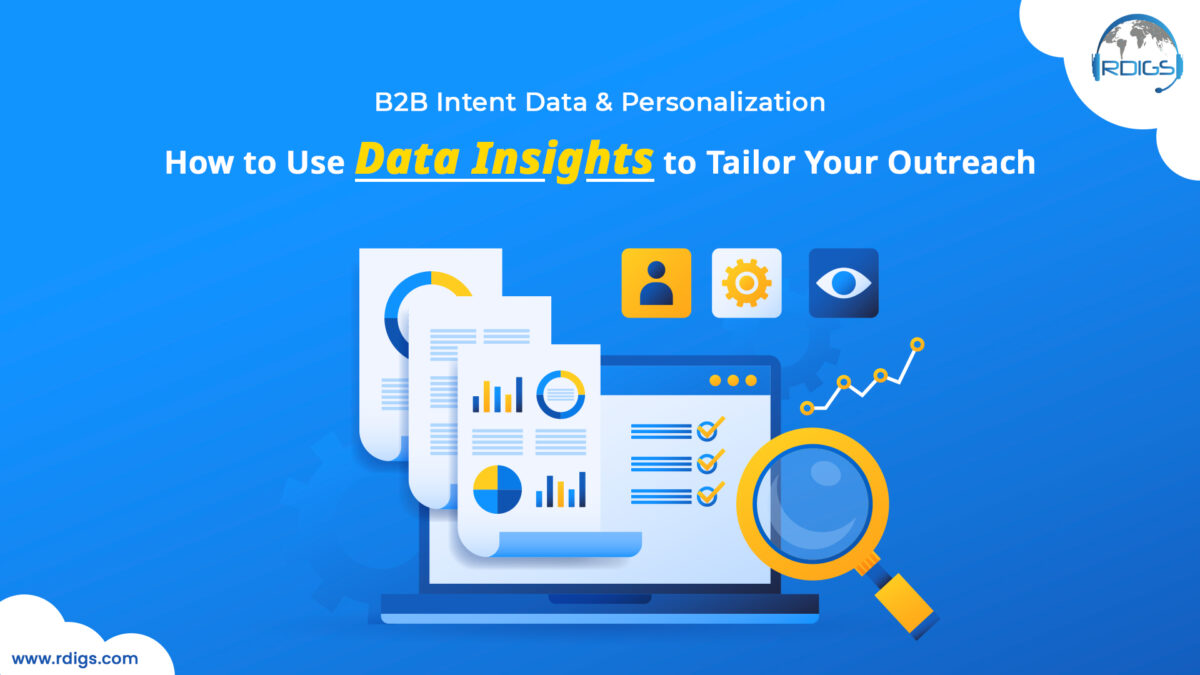Personalization is no longer considered a luxury but rather a must in today’s society. Businesses that use intent data to understand the requirements and preferences of their prospective clients are in a better position to create customized experiences that boost customer engagement and increase the number of sales made. In this post, we’ll examine how the use of intent data may help you personalize your business-to-business outreach activities and raise the likelihood of those efforts being successful.
Introduction
Businesses are relying increasingly on data-driven tactics to maximize their sales and marketing efforts as the digital marketing industry continues to evolve rapidly. According to a Forrester Research survey from 2022, 72% of B2B marketers believe that using intent data is essential to improving their marketing strategy [1]. The term “intent data” refers to information about the actions and pursuits of internet users that may be used to locate prospective clients, customize marketing initiatives, and, eventually, propel revenue development.
Understanding Intent Data:
Diverse sources collect intent data, including search engine queries, website visits, social media interactions, and content consumption patterns. By analyzing this data, marketers may acquire insights into the interests, requirements, and pain points of their target audience, which enables them to build outreach campaigns that are more focused and customized.
The Benefits of Personalization:
It has been shown that increasing levels of personalization lead to higher levels of customer engagement, customer satisfaction, and conversion rates. In a recent survey conducted by Gartner, it was discovered that personalized marketing campaigns generated conversion rates that were 20% higher than non-personalized ones [2]. You may make your marketing efforts more relevant and effective by employing intent data to tailor your outreach. This will, eventually, increase the likelihood of your marketing efforts being successful.
Tailoring Your Outreach with Intent Data:
To properly utilize intent data for customization, you must first segment your audience based on their behaviour, preferences, and demands. This allows you to create tailored messages and offers that resonate with each category. Here are some methods to utilize intent data to personalize your outreach:
Content personalization:
You may determine the issues your target audience is interested in by using intent data, and then you can develop content relevant to their requirements to meet those needs. This may include webinars, whitepapers, case studies, and blog articles, among other types of content.
Email Marketing:
Utilize data about the receiver’s interests and activities to segment your email list so that you may send tailored content, offers, and product suggestions to each recipient.
Account-Based Marketing (ABM):
You will be able to discover high-value accounts that have a significant interest in your goods or services and then prioritize your outreach efforts under those accounts after you have included intent data in your ABM strategy.
Retargeting:
Make use of data indicating a user’s desire to purchase a product or service to locate potential customers who have shown an interest in purchasing such a product or service, and then retarget these customers with targeted advertisements and offers to enhance the likelihood that they will make a purchase.
Conclusion
When utilized effectively, intent data is a potent tool that can significantly improve B2B outreach efforts. You can create more relevant and engaging experiences for your target audience by employing intent data to tailor your content, email marketing, account-based marketing (ABM), and retargeting techniques. This will, in the end, increase your conversion rates and drive revenue growth. Maintain your lead over the competition by incorporating data about consumers’ intentions into your marketing strategies and creating individualized customer experiences that strike a chord with prospective buyers.

